I’ve been a very contented user of Sirui Tripods for a few years now, after I first purchased the light weight carbon traveller, the T-2204XL, three years ago (After I wore out my Benro after 2 years). It’s been very reliable and has been used extensively in the UK and around the world, including trekking in the Italian Dolomites. I it does now need, after all that, the twist lock bushings serviced.
I was contacted by Sirui, firstly to ask if I was happy with my Sirui product, following which, they asked me if I was interested in field testing and reviewing another of their products. Given I’m a bit of a techy nerd, I said I would be more than happy to. I decided to go for one of their heavy weights.
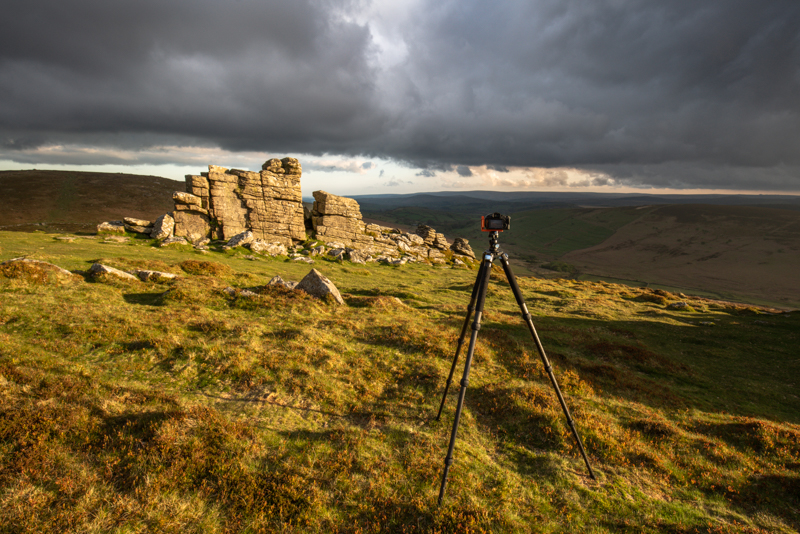
Armageddon at Hookney Tor, Dartmoor
The demo R-3213X was already on loan so I decided to go for the next model up, the ‘mungus’ R-4124X. The main difference being, the thickness of the carbon weave, stability and a bit of an extra weight.
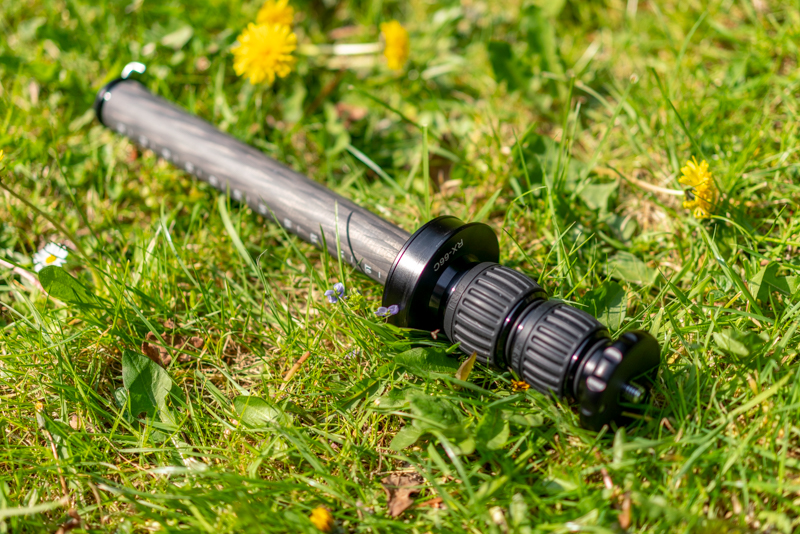
Sirui RX-66C telescopic centre column
I also was wondering about the absence of a centre column (I’m used to having one), for a bit of extra height, and perhaps for some inverted setups for macros. So, I asked if the review could also include the telescopic RX-66C (available separately).
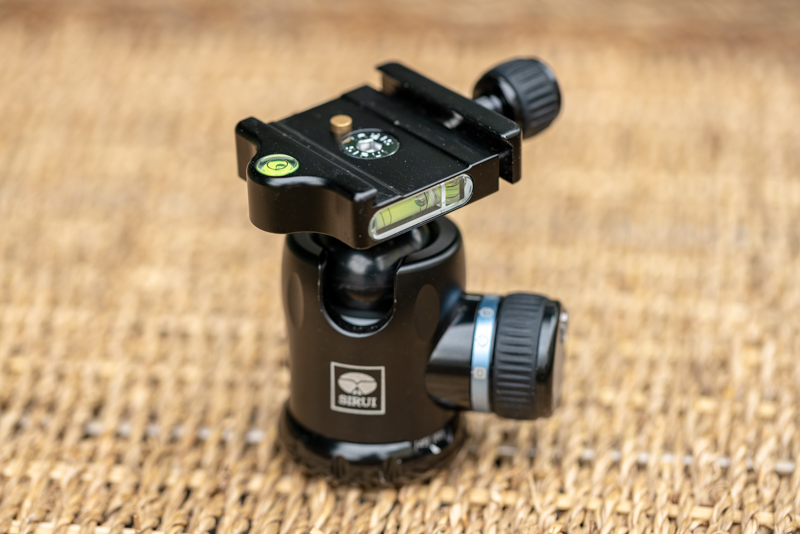
Sirui K10X Ball head
I already have the G-20X ball head, so I decided to try out the K10X as it has a bigger ball (greater load capacity) and a friction adjustment on the main ball control instead, of a separate knob.
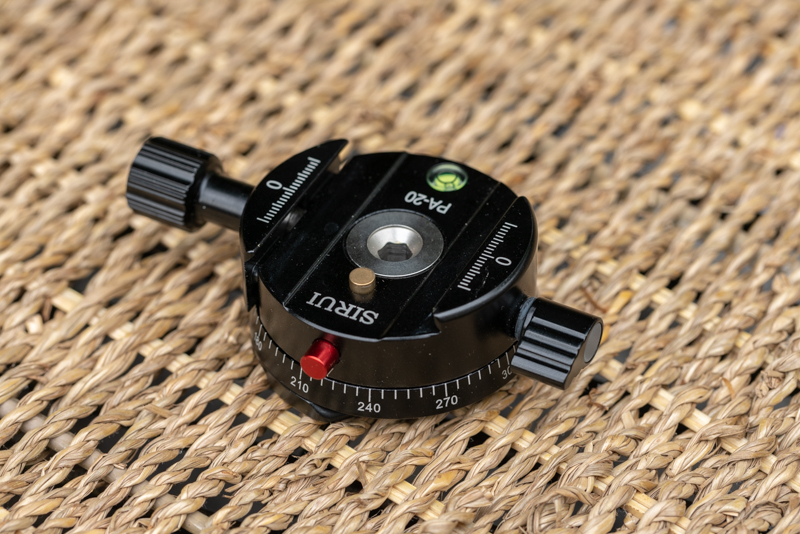
Sirui PA-20 panoramic base
I do a fair number of panoramics and I already use a 3rd party levelling head under the G-20X ball head on my T-2204XL so I was interested to see if the PA-20 would be useful or not for panoramics (as it can easily be detached, when not required, unlike a levelling head).
Tripod Specs
| Minimum height | 9 cm |
| Maximum height (no column) | 150 cm |
| Maximum height (RX-66C column extended) | 150 + 65 cm |
| Max payload | 25 kg |
| Legs sections | 4 |
| Legs tube diameter | 36mm, 32mm, 28mm, 24mm |
| Length (closed) | 55 cm |
| Weight | 2.50 kg |
| Material | Carbon Fibre 10x weave |
| Tripod head | Removable, not supplied |
First Impressions
I had the equipment on loan for about 3 weeks, which was certainly long enough for me to come to my conclusions. I planned to go out as much as I could (a great excuse eh), and to use it under different conditions, including landscapes, seascapes and macro.
As soon as I unpacked the tripod and extended the legs I was chuckling. It stands much taller than my T-2204XL, even without a centre column (150cm + 10cm for the head) but one reservation was the area the legs took up when fully extended. I generally use a light-weight tripod, perhaps sacrificing some stability in adverse conditions, which is generally more suited to me for trekking and longer walks to my locations. However, I have not really considered those times where extra weight and stability is an advantage, particularly when you don’t have to cart your gear too far.

RX-66C installed and collapsed
I ordered the RX-66C telescopic centre column with it, but after seeing it in the flesh, I knew the centre column would not be needed in most situations (I was told that at the time).
I can see this is a cross-over tripod for heavy stills and video cameras and is not a tripod for mountain hikes or flick under the arm / pop out moments. To be fair though, 2.8kg for the stability and size is some achievement, when my current setup is still 1.8kg.
Out in the Field
I not going to cover every single aspect of this tripod, as much of the specifications are available on the Sirui website LINK. No one wants to read the equivalent of War and Peace.
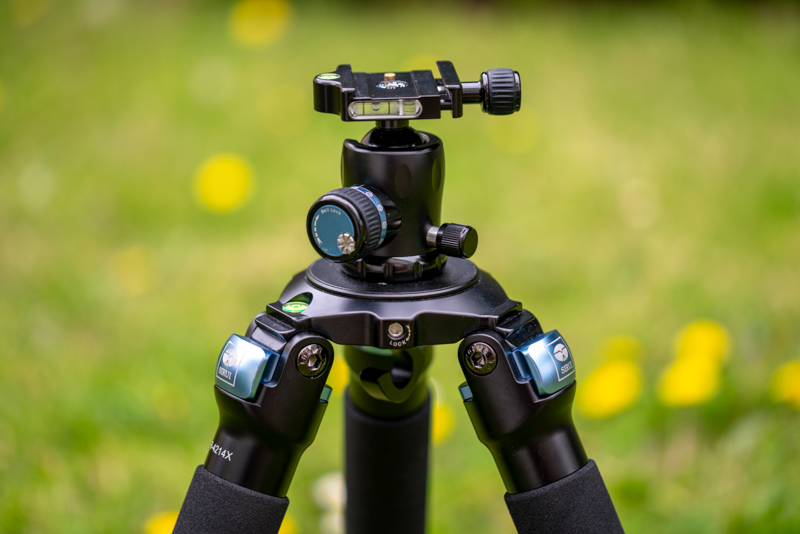
The Beast with the K10X installed. The ball head looks tiny in relation to the huge base area
The ‘beast’ does look and feel like a very professional piece of equipment. During the time I had with it, I felt the outer finish was pretty flawless, the two foam leg grips were thick and comfortable, and all of the working parts and joints were smooth with no laxity or excessive friction. The blue anodisation I think however, if it was my own, would take a bit of a beating (if you don’t use a carry bag (supplied) or attach it, like me, to the camera bag, and dump it on the ground).
The wide spider is designed so it can take a heavy video head but also means it has a bit more stability when the legs are extended out fully (90 degrees is available) and lays out flat out on the ground (I used this for most of the macros I captured). The package also includes the 75 mm adapter half shell RX2-75A, which can be replaced with the mounting plate as required. A matching levelling half ball, ideal for video and a panoramic base levelling is available: RX-75B.
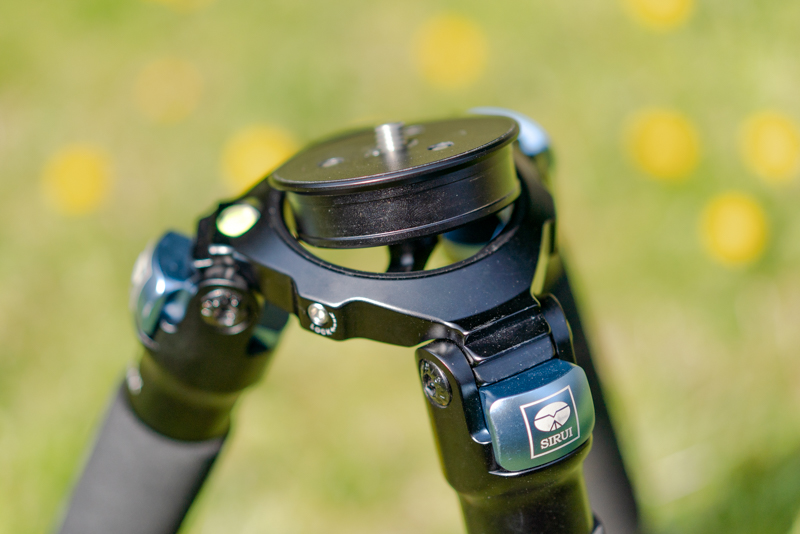
The removable mounting plate ready to swap with the cup or center column
The head mounting plate is equipped with 3 screws. They are easily undone, and the plate can be swapped for the telescopic RX-66C or half-ball.
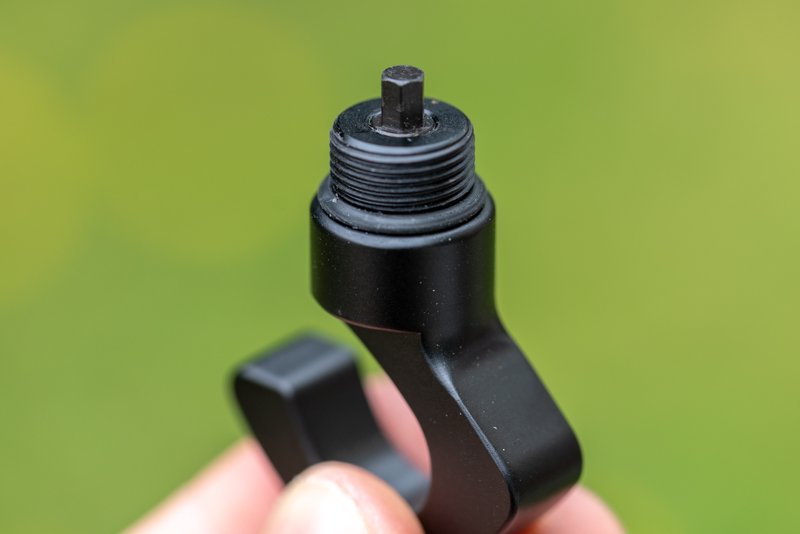
Nifty hex key built into the underside hook
Also included is a big hook underneath, like most tripods, to allow for a weight to be attached. When unscrewed is doubles as a nifty hex key, so you won’t forget it on a trip away.
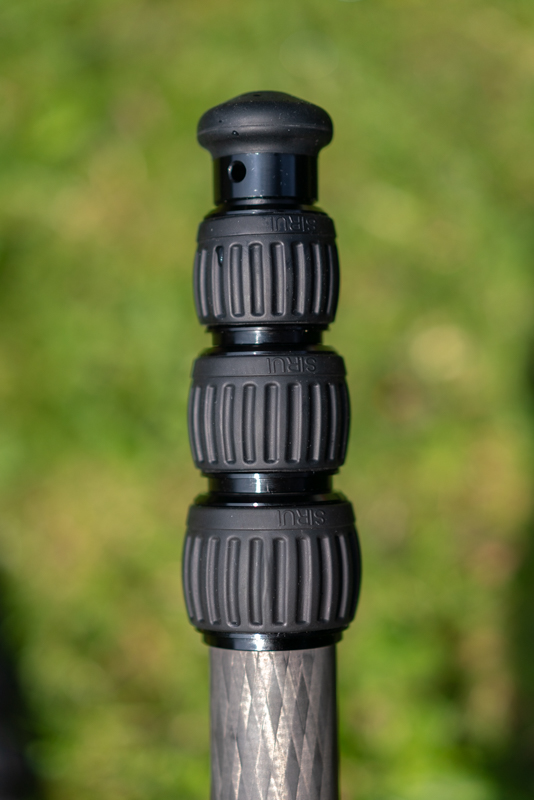
Chunky grippy twist leg locks
The legs are in 4 sections, all with rubberised twist-locks. Overall the twist locks on many tripods have improved over the years, the old ones requiring a lot of effort to lock the legs. Generally, the better twist locks allow for a ¼ to ½ turn and the leg is fully unlocked.
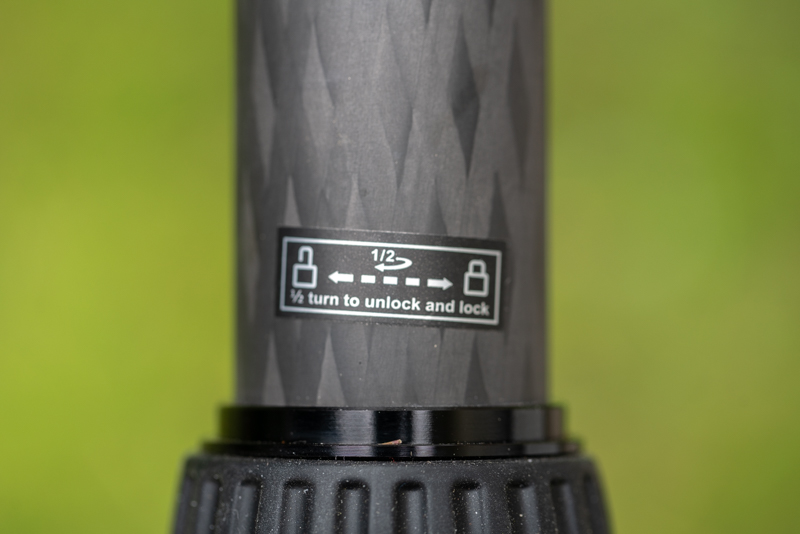
1/2 turn unlock however I found you don’t even need that
Considering the beefy construction and the diameter of the twist locks you only need about a ¼ turn and the legs drop out quickly, under their own weight (and for storage, but watch you don’t trap your skin, when the legs retract, as they to collapse quickly). You do need big hands for the larger twist locks on this model though. A problem I have found with some leg locks that have rubber grips, is that the grip becomes loose and rotates freely around the lock itself when wet, or if under extremely hot conditions. These did not budge at all.
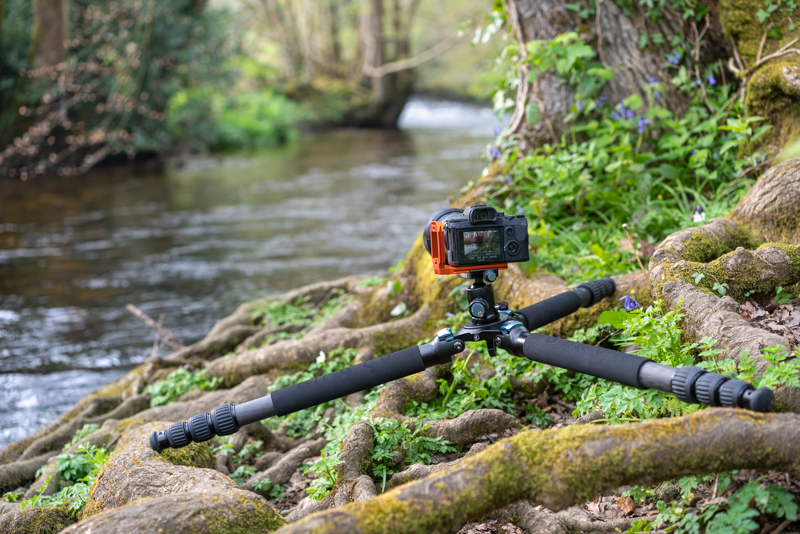
The R-4124X is pretty compact and low to the ground, with the legs retracted at 90 degrees without a centre column
The one advantage of not using a centre column, and the 90-degree leg lock, is when you need to get very low to the ground. You can, with many tripods, invert the centre column and position the camera underneath the legs (an L-bracket really helps too). This however takes time and is rather cumbersome. I did find this aspect very advantageous for when I needed to setup quickly. One disadvantage is you can’t shoot very low and point the camera up, like you can with an inverted column. You could obviously do this but would require going out with the RX-66C in your bag or already fitted.
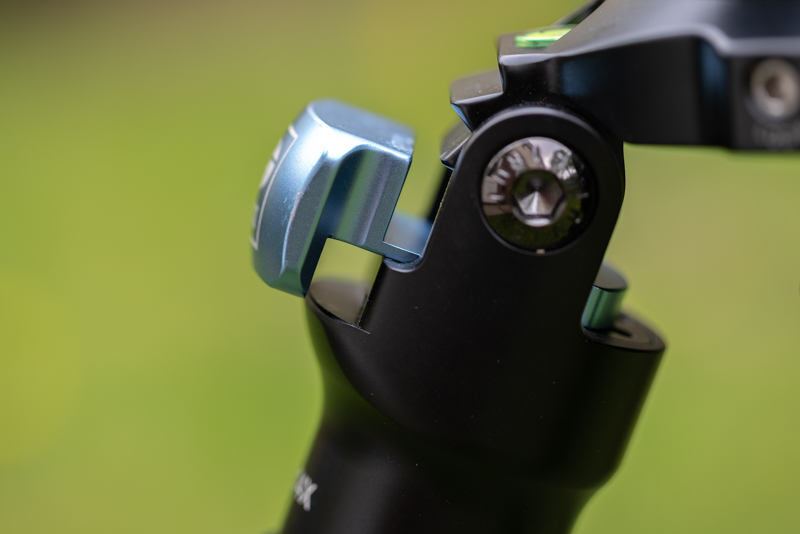
Leg angle lock – locked out position
The leg angle locks are chunky and if I am honest not as quick to adjust as I am used to. I think this is very much down to the maximum weight capacity. The locks slide outwards, click and hold. They were harder to pull or push out then the traditional Sirui lever locks I have on the T-2204XL.
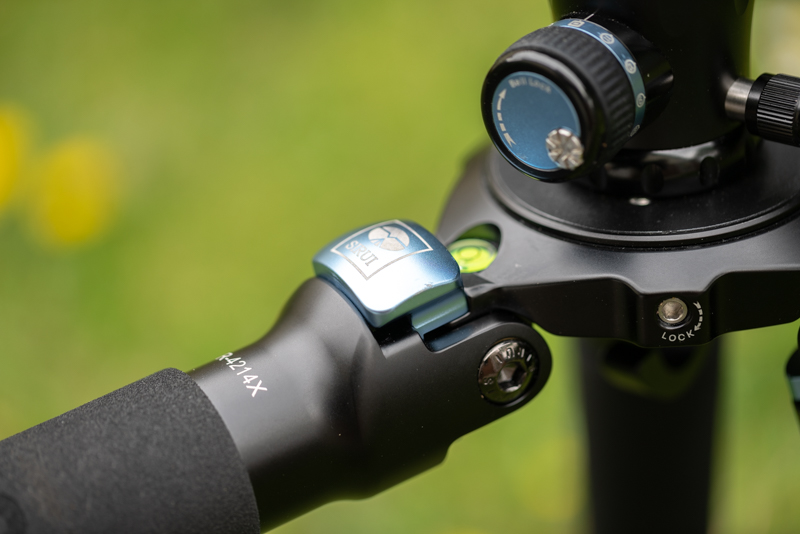
Leg angle lock – It automatically clicks back in at 90 degrees
However, when extended out at 90 degrees these snap back in and lock the leg. Then you can bend the leg to the next position without touching the leg lock, and thus works like a traditional lever lock.
The joints were stiffer then I am used to, but given the load capacity, this is needed to stop the legs from shifting under loads too quickly. All in all, the mechanisms were all within very good tolerances and I felt well aligned and machined/cast.
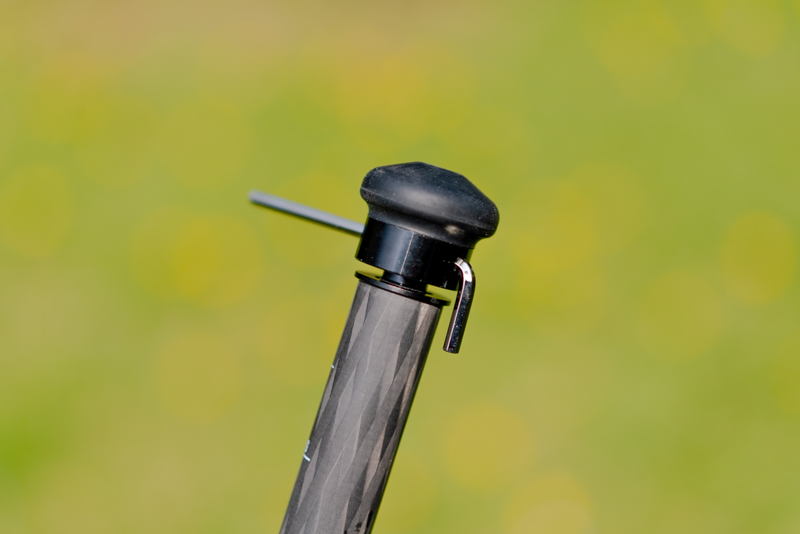
The hole in the foot can be used to tighten or unscrew and a drain
The RX-Series tripods all feature three rubber feet and three metal spikes. The rubber feet are pretty chunky and initially I wondered what the holes in them were for. They have a dual functionality; drain holes if the legs fill with water (as with most tripods they are not weather sealed, although Sirui have a specific waterproof series), and a hole so that a bar can be put through to tighten/unlock.
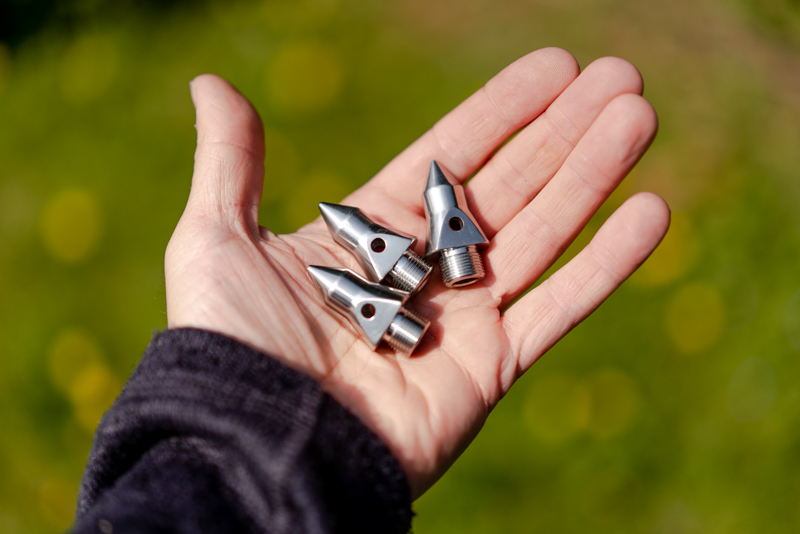
The supplied stainless steel spikes – a flat side for a spanner or use the drain hole to help tighten / unscrew
They are easy to remove and to swap with the chunky (supplied) spikes.
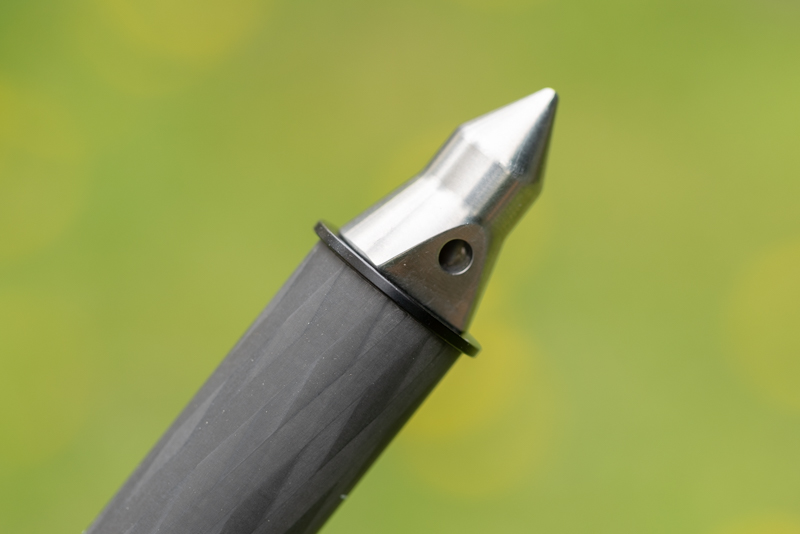
Spike installed
The only drawback with my current T-2204XL is that the spikes are integral, can’t be swapped for bigger spikes, and are not as quite as effective as straight spikes alone. I do prefer spikes, when photographing moorland or woodland, to be able to pierce through the vegetation, into the harder ground.
The leg tubes are constructed from 10x (weave) carbon fibre. Sirui, until recently, have used 8x carbon weaves but recently most are now 10x unlike many tripod manufacturers. Generally, the more layers you have, the stiffer and stronger the material is (like plywood). The extra strength generally gives a weight advantage, as less material needs to be used for the same load bearing capacity.
Of note is the physical size of this beast. Using it in small spaces can be difficult, mostly because of the wider stance it has compared to smaller tripods. However, there were not many circumstances where this was a problem for me. The 4 section legs collapse compactly to be honest. It’s only when the pod is fully extended, that a large area on the floor is taken up, which could be an issue if you are standing on a little rock or a narrow ledge or wall.
The main advantage of this chunky tripod is its stability. Many of the tripods I have tried, admittedly in the trekking/traveling range, are somewhat unstable in high winds (even when weighted) and suffer more with wind induced vibrations. They also shift more at the coast in the water, and perhaps also feel a bit tinny (not that that is very important). During the whole time it felt extremely secure and noticeably more stable in the sand as the waves washed in and out. Perhaps this might be more to do with its weight but also the wider stance and footprint.
RX-66C telescopic centre column
I have to say I didn’t need the RX-66C telescopic centre column at all (I was warned I wouldn’t by Sirui). I did assemble it and used it briefly. It’s extremely sturdy without any flex at all. It has the same twist locks as the legs and the carbon is also 10x weave and pretty chunky (unlike the slimmer one included with the R-3123X). It can swapped easily for the base plate, by removing the 3 head mounting plate screws, and then swapping the whole assembly over (obviously you will need to swap the head over too).
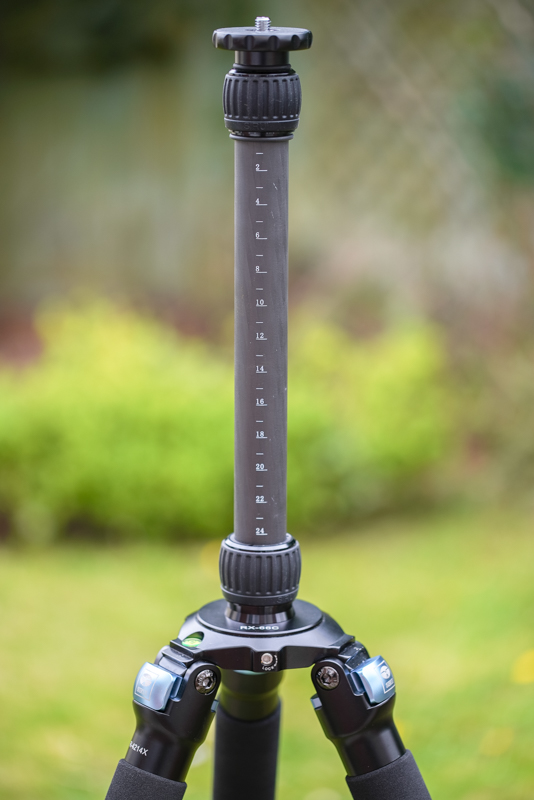
Stage 1 of the centre column extended
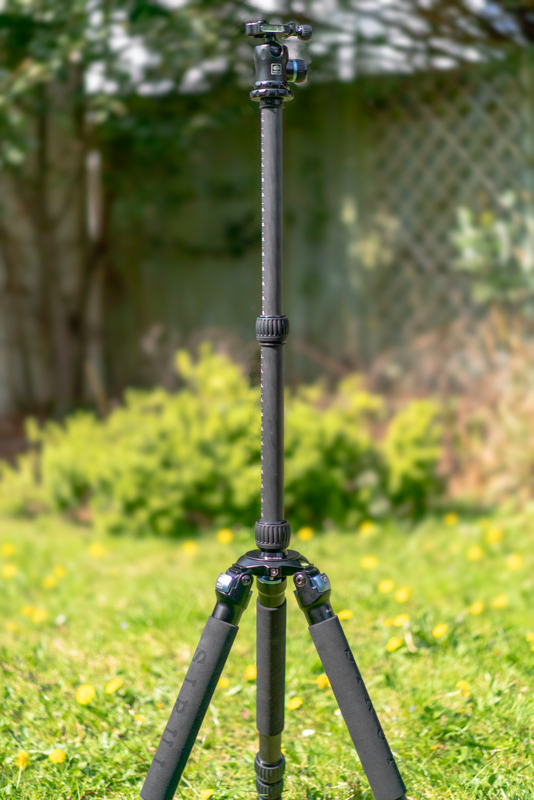
Both stages of the centre column extended
I think the only time I would use it would be if I needed to stand on a ledge above it or inverted doing macro. Otherwise it is above my head when fully extended (I am 6ft tall). It does add another chunk of weight to the kit. Perhaps if you are 7ft, or perhaps need the height for some other reason, including studio work or video, then it would come in useful.
K-10X Ball Head
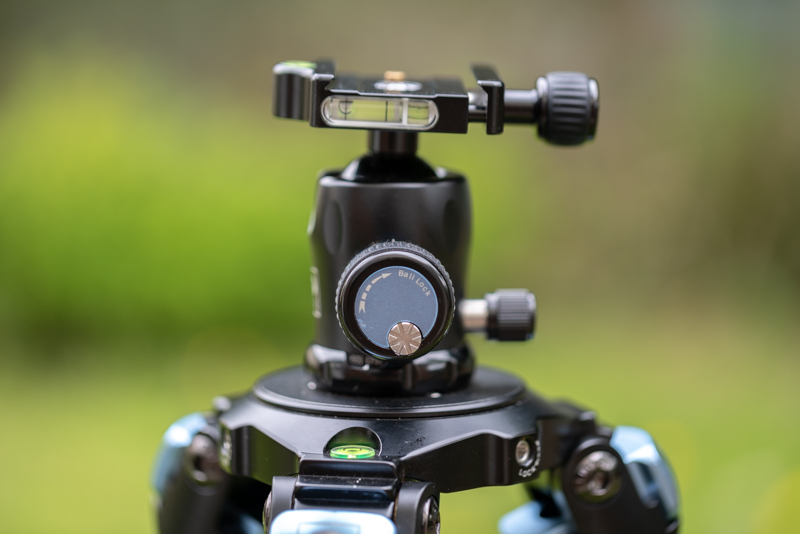
K-10X ball head with the friction adjustment dial in the main control knob
The K-10X is the smallest in Sirui’s premium ‘K’ range of ball heads. Like its compadres, the K-10X has separate locking knobs for the main ball and the independent panning base, with an embedded friction-setting control on the main locking knob. The usual single slot in the ball casing allows the camera to be rotated into portrait orientation. The quick-release platform has three bubble levels, and a safety interlock post to stop your camera inadvertently sliding off the head.
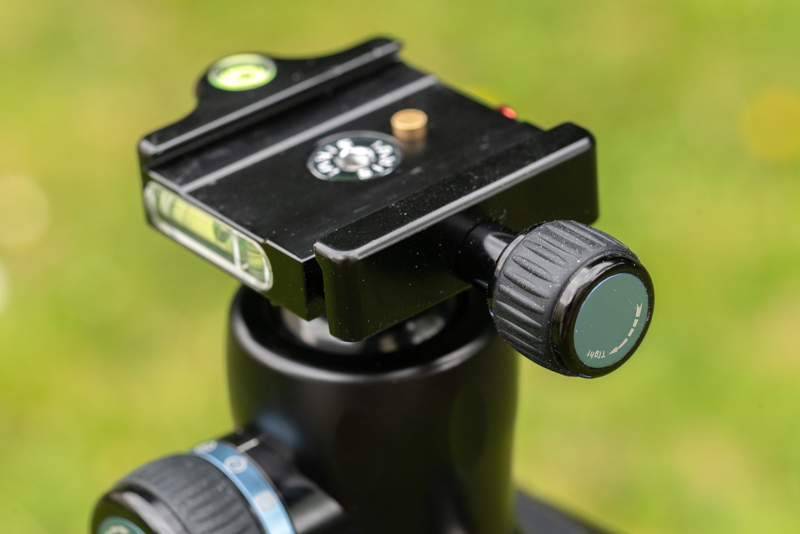
K-10X ball head with the rubberised clamp knob and safety lock
It has a 33mm ball diameter, 96mm height and weight of 390g, the K-10X is a natural companion for relatively portable tripods like my own T-2204X. I didn’t feel the extra weight of the larger ball heads was necessary given the weight of my equipment. The K-10X (like all their heads I have used) has a nicely engineered finished. The ball was very smooth in use at any angle.
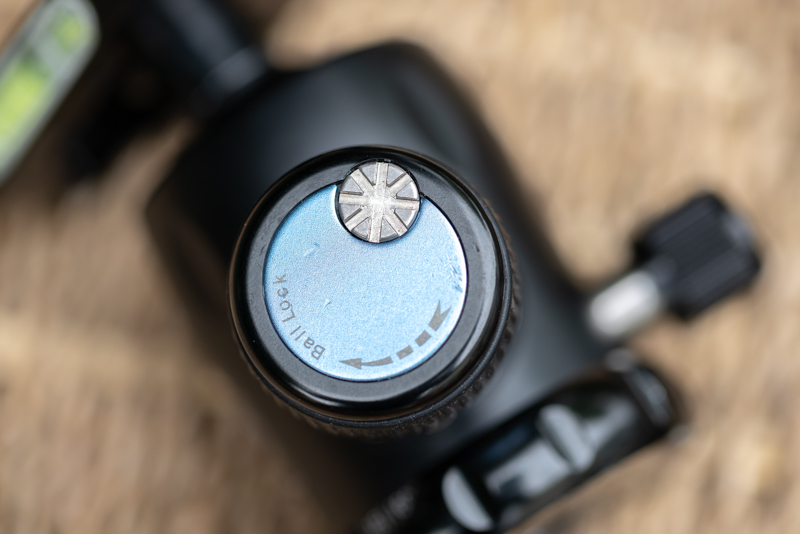
Ball lock knob with integral friction adjuster
Often there is a third friction knob on many ball heads, and whilst this allows for easier adjustment of the constant ball friction, I feel this is often a bit pointless, as the main control knob acts as a frictional adjuster. I personally I liked this setup, as it’s simpler, unless you are going to mount significantly heavier equipment, it’s ‘set it and forget’.
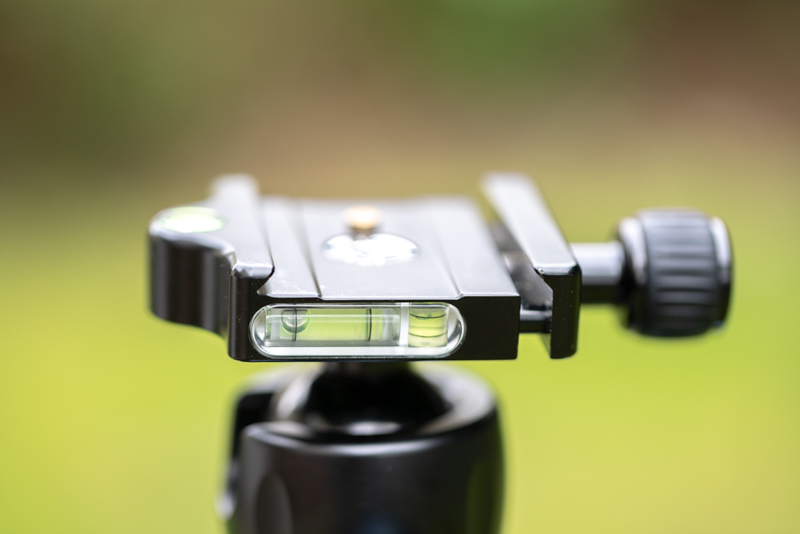
Just in case you needed everything level…
There is a plethora of levels on the top plate, which many ball heads don’t have. It has 2 on the side and one on the top. The clamp knob is smooth and has a nice rubber grip, which in cold weather, is desirable to prevent those cracked fingers (I have suffered with in Norway) when using textured metal ones. I prefer lever clamps, as they are a bit quicker to get setup, than with the screw clamps, but not many of those out there.
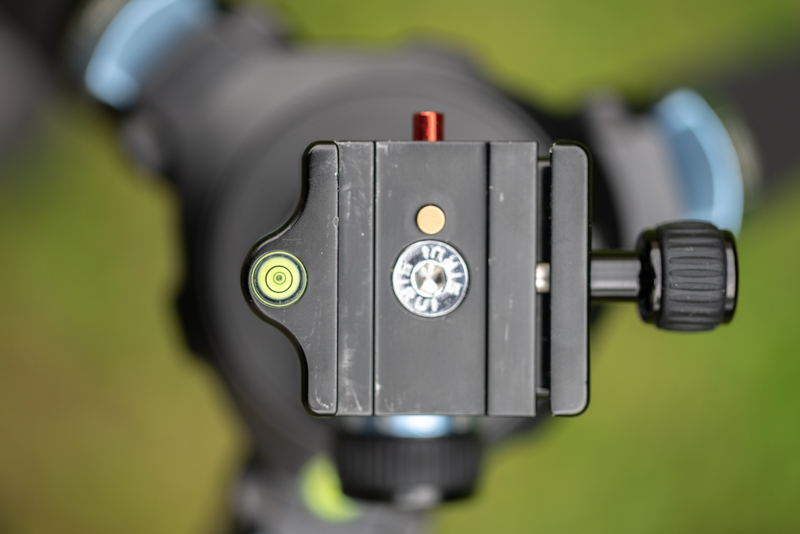
Ball head clamp from above with yet another level
My equipment is not very heavy (usually a 24-70 and the mirrorless Sony A7RIII body) compared to say a large long focal prime, DLSR and grip. You would want to move up in the K series, if you wanted a Sirui branded head, or even get a gimble or 3 axis head for stability.
PA-20 Panoramic Head Attachment
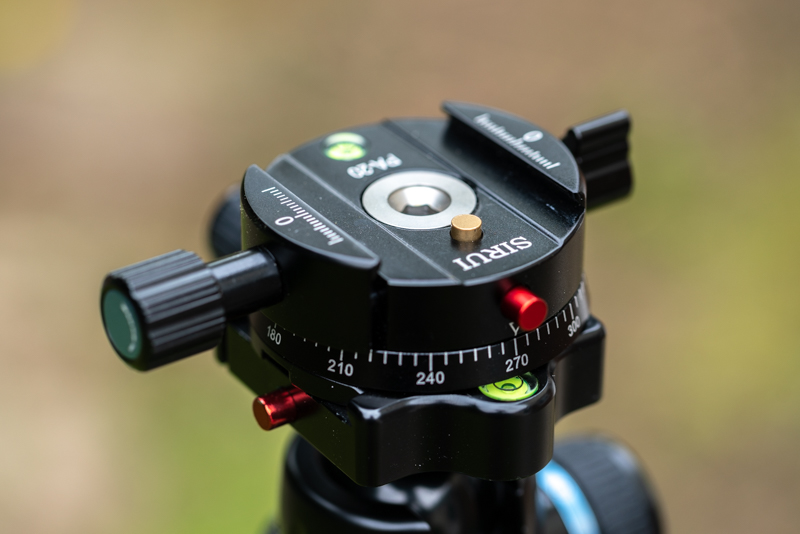
Sirui PA-20 panoramic base (doesn’t have a rubberised knob though) with rotational degree marks
I am using a 3rd party (cheap one I admit from China) levelling base which is not the lightest by any means, but extremely useful for quickly setting up panoramics. It just means you don’t have to faff trying to adjust each leg to get the tripod (bubble) level to start shooting your panorama.
I thought I’d try the PA-20 out as it’s quite lightweight (146g) and simplicity and the fact you can easily attach it and remove it from the Arca clamp. I was warned by another photographer about its potential limitations compared with a leveling base, nodal slider or leveling head.
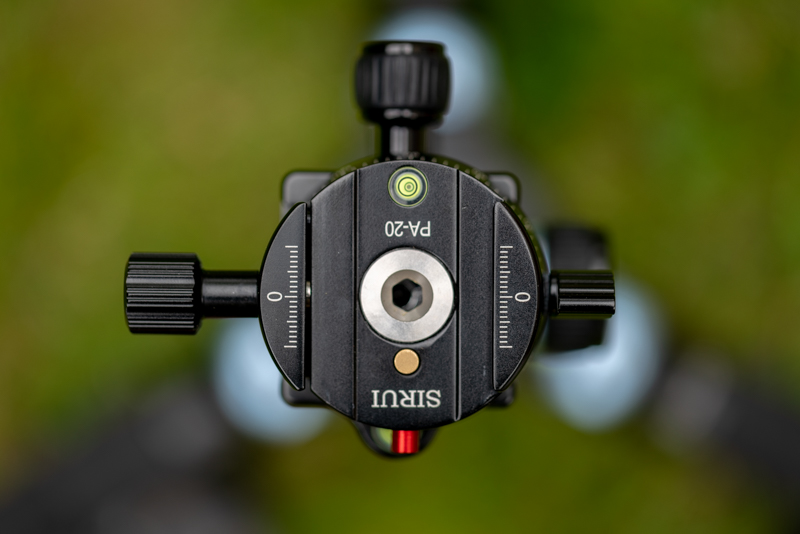
PA-20 from the top. has the same features as the K-10X ball head
The PA-20 is well made, machined and well anodised. The build quality is excellent. I tried it out on several occasions with a few panoramic compositions. It’s smooth when rotating with no judders or locks and there is separate swivel lock opposite base plate locking screw (if you have this leaver under the lens though then it is a bit fiddly to use). There is also another safety lock to prevent the camera sliding off when the clamp is loosened.
There is a bubble level, so you can get the camera level as well. However, you are, unlike with a levelling head, limited to panoramics that are pitch perfect, that is, level in the vertical and horizonal fields. Unlike a levelling head, if the camera is pitched down or up, you will get a dished uneven panorama. Essentially it does what it’s supposed to do and allows the camera to be rotated left or right and it allows the camera to be set level. I guess if you have a level on your camera (LCD or hot shoe) or top plate, and a head that can swivel at it’s base (most do), then you might not require it.
Conclusions
Essentially this is a big tripod. There is no avoiding the issue. To some this can be a great advantage and to others a hinderance. If you are off into the mountains this probably isn’t the tripod for you, and neither would you have purchased it. If you are doing video, wildlife or anything else that uses heavy equipment then I think this would be ideal. I would certainly be happy to use it at the coast or if I wasn’t going walk several miles with it, but the extra 1kg does make a bit of difference on a longer trek.
However, I think If I had two main tripods, this, or one of the other RX models and perhaps a traveller series, would be a perfect combination of portability, and stability when you needed it. By no means is this a heavy tripod for its class, weight capacity and stability, in fact I was gobsmacked (as were others I showed it to) by its size, when fully extended, given its reported weight.
Camera shake, and vibrations, were not something I experienced with this tripod, whereas I accept it in other lightweight tripods I have use(d). I think If I had a choice from the RX series, from a landscape photographer’s point of view, the R-3213X would probably have the advantage of being slightly lighter. It also comes with a centre column (non-telescopic) has the same great build design.
Essentially the other bits of kit tested (K-10X ball head, PA-20 panoramic plate and RX-66C telescopic centre column) all did exactly what they said on the tin. Well built, smooth in use and seemed to withstand some abuse.
Some proof below that I did field test this for Sirui and not just take images of it in my back garden!
The Results
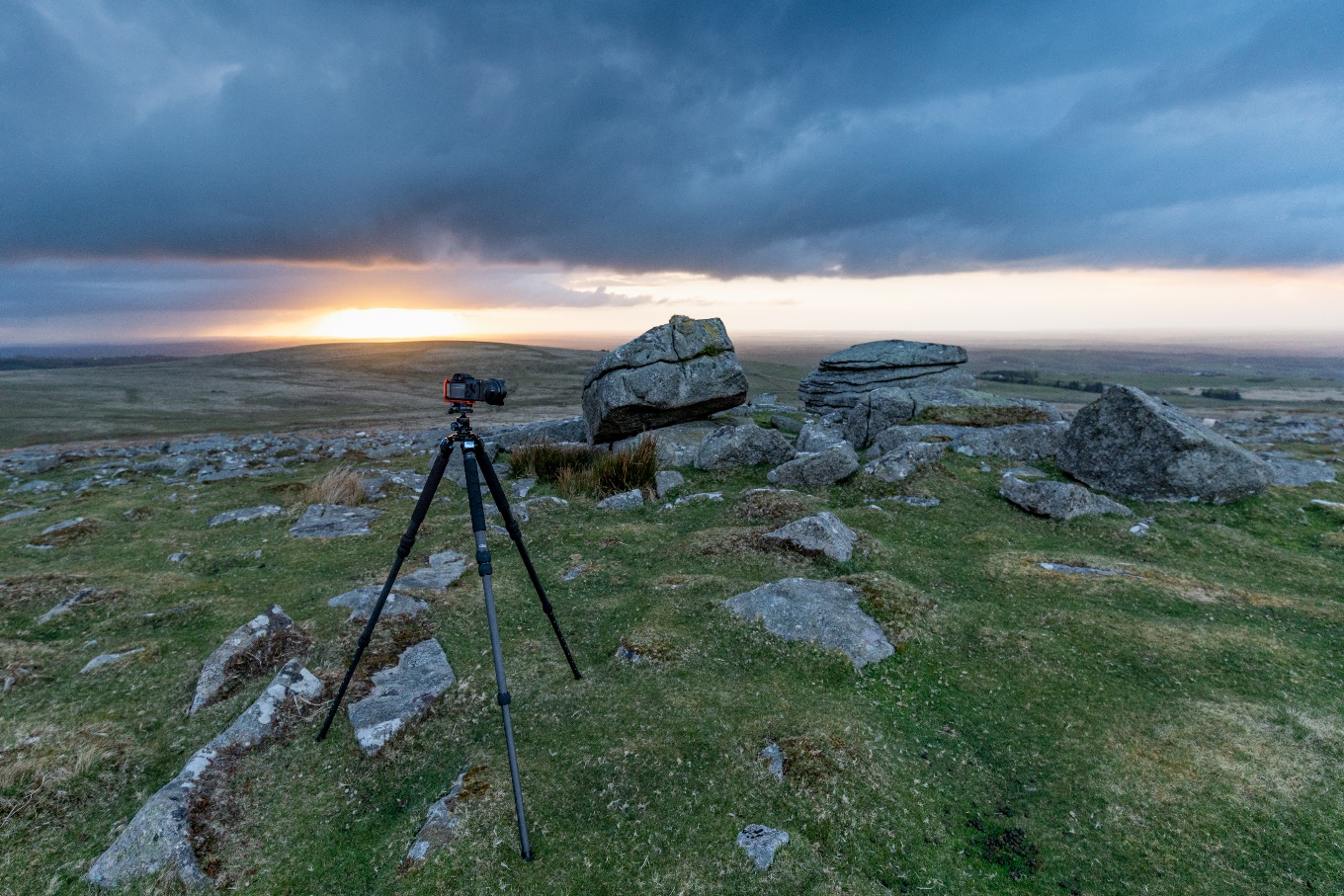
Rowtor, Dartmoor at sunset

Panoramic of Rowtor, Dartmoor at sunset

Setting up the tele stabilising bracket to capture the moonrise over Haytor at 800mm
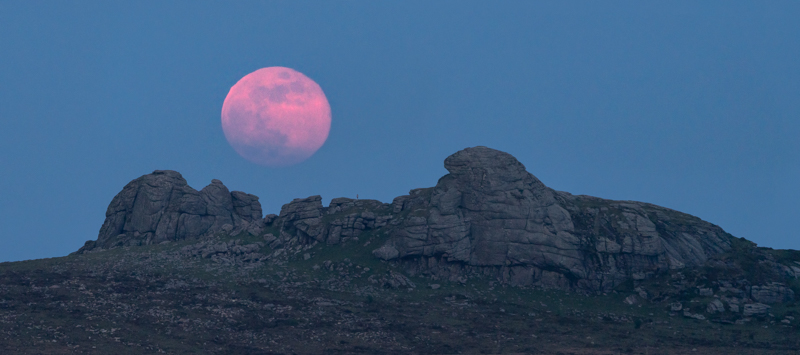
Haytor Blood moonrise panoramic
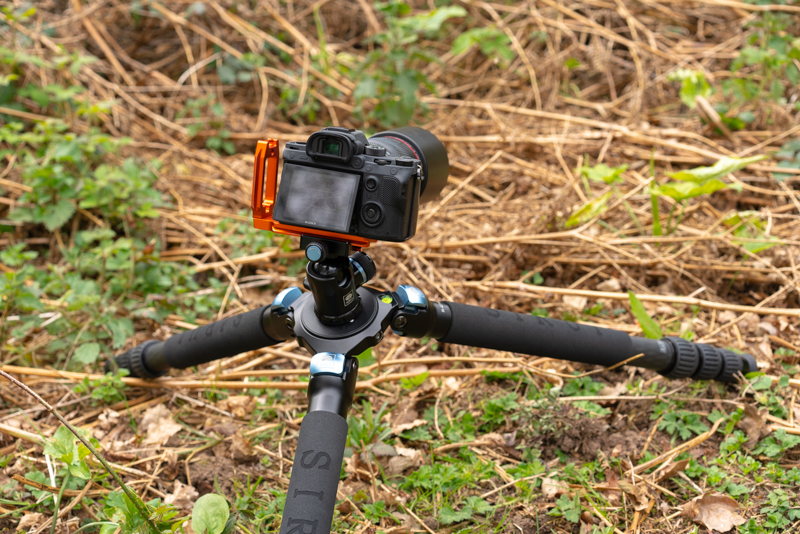
Butterfly hunting at Haldon, Devon

A rare Pearl-Bordered Fritillary capture at Haldon, Devon

Storm clouds roll in at sunset at Hookney Tor, Dartmoor

A short period of intense light as the storm clouds break at Hookney Tor, Dartmoor







Thank you Richard for a very comprehensive review of these products.
Firstly, I would consider the the 30x or 40x a better match for the 4214 in terms of regidity, as I can see it being used with long primes although a gimbal may be a better choice.
It’s worth noting that 4 Sirui heads were tested by The Center Column https://thecentercolumn.com/head-rankings/ball-head-rankings/ and compare very favourably to some fairly expensive ones – I now own a 30x which I’m very pleased with.
I’m currently trying to decide between the SR 3203 & the R-4213x Sirui’s both being 1.5m high. I accept that three sections will be slightly longer but have one less joint. The 3203 is less money, whilst the 4213 will be more than adequate for my needs: landscape and night time although a Tamron 150-600 G2 may be a future acquisition for aviation, wildlife and our two cats.
Best wishes, Noel
Thanks Noel. Sorry for the slow reply. Yes I agree – it was a combo that was supplied to me and yes I now have the 30x too. And yes very happy with it. I also think that you can pay far too much for ball heads. I think for me having more leg segments means I can collapse smaller for portability and packing but if this isn’t an issue the increased stiffness is better with less sections and quicker to setup and less issues with less joints.
Agreed. 4 legs more portable, I’m a three leg man myself (!) although it makes collapsed height longer, being an engineer I consider the more joints in a structure the less rigid it may be. However, I suspect the substantial tube diameter of the 4214 does overcome this.
Hello again Richard
Have decide to go for the R3213x as it meets my requirements best, the 4213 could be ‘too much tripod’, if you know what I mean. Therefore after a lot of research and measuring heights etc, I decided the 3213 was the best option for me. The largest lens I’m going to use with it is the Tamron 150-600 and not exactly that heavy. I could not justify more so If I end up with a 500 f2.8 then yes, a 4213 or bigger would probably be better suited.
Have you tested the Sirui gimbal yet? as thats going to be another consideration
Thanks for your help and excellent website
Noel
Hello again Richard, just to say my R4213x legs arrived today and Im very pleased. I initially ordered a 3213x, but decided to go up a step as the height without centre on the R4213 is 1.5m against 1.40, I know thats not much but when shooting downhill it provides a little more or I dont have to stoop in normal use.
I’m extremely pleased and impressed by the quality of the tripod and just waiting for it to stop raining!
Anyway, my thanks again for your help and your very good review, best wishes